What the Metro could have looked like
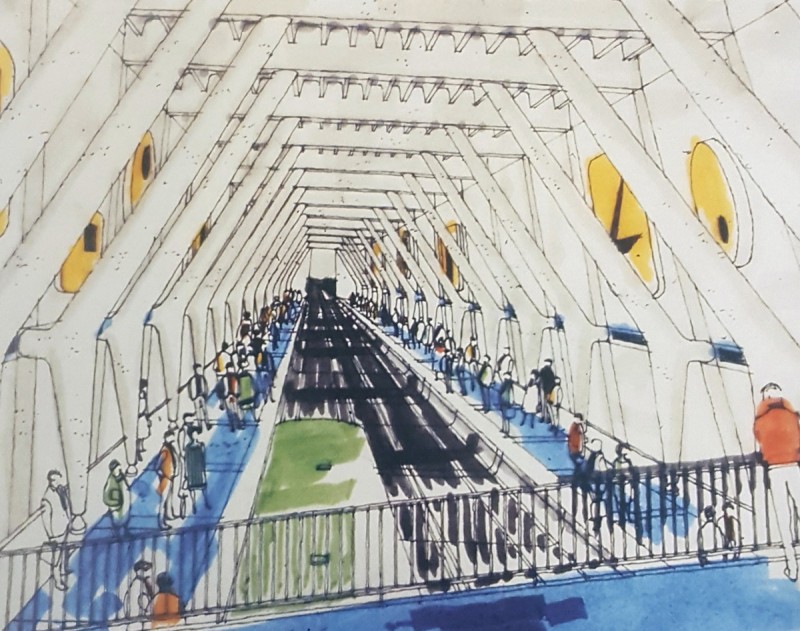
Studies for alternative Metro station designs using side-mounted diagonal struts, designed 1967. Image courtesy of the US Commission of Fine Arts.
In 1976, Washington, DC’s Metrorail system made its debut, offering a vital alternative to the automobile. At the time, it was one of the first rapid transit systems in the country, and it has continued to grow ever since, now offering six lines with over 90 stations and covering more than 100 miles. Since it first opened its doors, it has become a major staple of transportation in the Washington region, even with the drops in ridership.
Despite criticisms of the system, one positive attribute to the Metro is its pleasant appearance. It can be easy to ignore its aesthetics after a long day of work, crowding on the platform, hot cars, and — worst yet — fires, but even a splash of paint is enough to get locals and architecture critics riled up if it means tampering with the appearance of the stations.
But the look of the Metro could have been much, much different. It took some time before Chicago-based architect Harry Weese finally got approval from members of the US Commission of Fine Arts (CFA). If he had gotten his way, certain stations would have been akin to what one member described as “Hansel and Gretel.”
It may come as a surprise to some that it took a bit of teeth-pulling before the Metro finally got an agreed-upon look. The Washington Post mistakenly reported that Weese worked easily with the CFA, but in truth, several members were aggressively against his original plans. We’ll get to that.
Building Metro in the age of the automobile
At the time when planning began, the public generally didn’t see much need for a Metrorail system. In the mid-1960s, four out of five families in the nation owned at least one automobile, according to Zachary M. Schrag in his publication “The Great Society Subway: A History of the Washington Metro.” The popularity of suburbs was also increasing exponentially in part because driving there was easier, and public transit trips declined.
In 1933, Capital Transit was the sole company that owned every streetcar in the city. It formed from a merger between Washington Railway, Capital Traction and Washington Rapid Transit. Labor relations, rather than declining patronage, eventually caused the company to crumble.
For seven weeks, starting in July 1955, every operator of all 750 buses and 450 streetcars went on strike, forcing commuters to hitchhike or carpool. Months later, the company was eventually renamed DC Transit after the franchise was sold to New York-based financier O. Roy Chalk after pressure arose to switch streetcars to buses.
The idea for a city-wide subway system was first proposed in the 1940s by the engineering firms of J.E. Greiner and De Leuw, Cather & Company in a pair of studies. This proposal, which called for $35 million in order to depress certain streets for exclusive use by streetcars, was shelved due to cost concerns.
In 1955, it was finally time to reconsider the proposal, but with new ideas. Congress appropriated $400,000 to create the Mass Transportation Study (MTS), whose authors hoped to figure out how to predict traffic demand and accommodate it. The final report was submitted in July 1959 with rail an afterthought, mainly intended to reduce highway widths rather than eliminate highways.
A year later, Congress neither rejected nor endorsed the MTS plan, according to Schrag. Congress moved forward by creating the federal agency known as the National Capital Transportation Agency (NCTA), establishing the Washington Metropolitan Area Transit Authority (WMATA) and placing a temporary moratorium on freeway construction in specific areas of the District.
From 1960 to 1965, there was little progress on creating a rail system in the nation’s capital. It was considered an abstract idea since it was still uncertain if commuters would be willing to abandon their cars. There were also few rapid transit systems in North America to answer this question, as four — in Boston, New York, Chicago, and Philadelphia — were created long before automobile ownership became common, and two — in Toronto and Cleveland — were still new at the time. Despite the many questions that came with the potential of a rail system, the NCTA moved forward with hiring a general architectural consultant.
Harry Weese, a rising name in American architecture, was officially on board in March 1966. The hard part was just beginning.
The beginning of the Metro design process
In order to inform his idea of what makes a great rail system, Weese went abroad. He visited London, Paris, Rome, Stockholm, and many other smaller cities, hoping to take the best elements of each and combine them into the perfect system for the nation’s capital.
In Berlin, Weese was happy to see that passengers could walk or ride escalators from the surface of the street to the platform with no intervening mezzanines. In Milan, the entire system was unified by its graphic design, while in Montreal, every station individually reflected its relation to its neighborhood. Visits to Lisbon, Rome, London, and Paris inspired him to focus on vaults instead of using columns in order to improve sightlines and create a more spacious interior.
When it came to New York City, though, there were only warning signs. At its start, New York’s rail system was applauded for its tile mosaics and bas reliefs, but over time, the subway became filthy and crowded with ridership reaching a peak of more than 2 billion in 1947. It was, as described by The New York Times in 1946, “a mobile torture chamber.”
With all this in mind, in 1966 and 1967, Weese created a proposal with dozens of views for station interiors with a simple semiellipse, with a flat bottom and curved top. For cut-and-cover stations, the vault was proposed to have straight, vertical walls supporting a curved ceiling. Other drawings showed roofs supported with columns and diagonal struts. Influenced by the rail system in Stockholm, Weese also designed a proposal with exposed stone walls.
A sketch from July 1966 for the Metro. Image courtesy of the US Commission of Fine Arts. 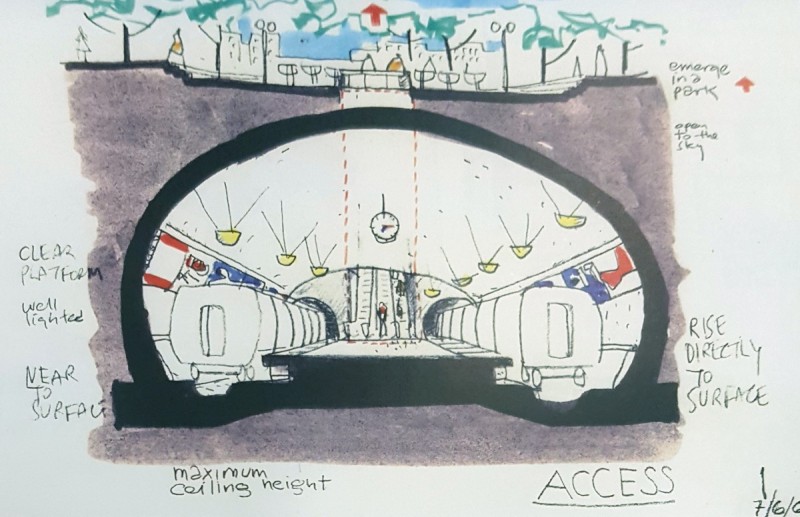
Weese's initial model for the Woodley Park station, designed September 1966. Image courtesy of the US Commission of Fine Arts. 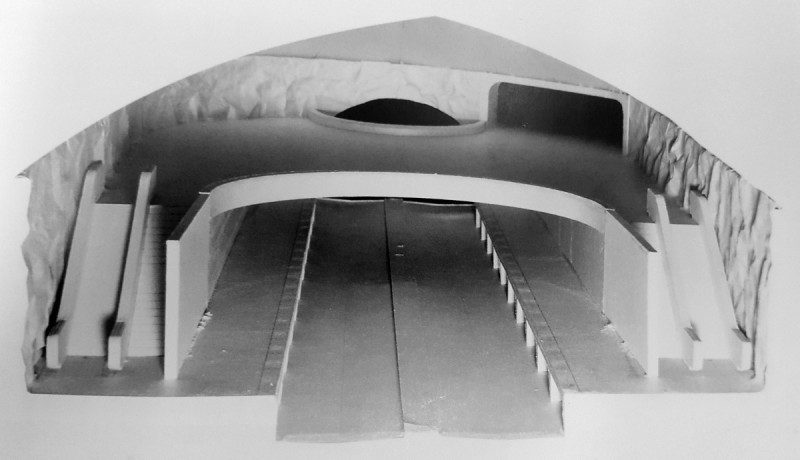
Studies for alternative Metro station designs using X-shaped beams, designed 1967. Image courtesy of the US Commission of Fine Arts. 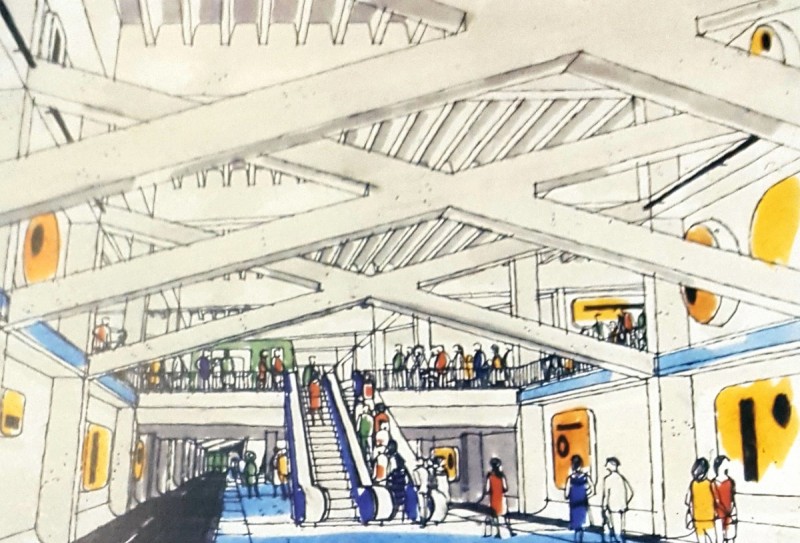
In September 1966, the CFA “generally approved” two concepts by Weese, though these concepts shifted over time due to cost concerns, according to the publication “Civic Art: A Centennial History of the US Commission of Fine Arts,” edited by Thomas E. Luebke.
A transcript of the CFA’s meeting on September 21, 1966, showed Weese’s own reservations about some of his designs. Weese said, “We don’t like the columns because we think they clutter this space, which is already too long for its width.”
Despite this, CFA chairman William Walton said, “We are very impressed. We find it exciting.” This positivity would soon come to a halt.
When presented the Metrorail design with the exposed, rugged stone walls, the CFA showed disapproval. In a meeting on April 18, 1967, CFA member Gordon Bunshaft described the trainroom as “a refined coal mine shaft.” In the following presentation on June 20, 1967, Bunshaft called the rocky stations “folk art.” CFA member Aline Saarinen compared it to “Hansel and Gretel.”
At this meeting, Weese proposed columns and slab for cut-and-cover construction, shell vaults for solid stone boring, and high vaults for deep, but unstable, soils. For an “overall impression of rustic quaintness,” Weese used unfinished concrete in each design. To keep the design of each station consistent, all escalators, fare gates, signs, and attendants’ kiosks would be the same.
In response, Bunshaft asked Weese to grasp the “serious [and] marvelous opportunity to do something significant,” encouraging instead a design that could be something “between a palace and a concrete shelter.” In his publication, “The Great Society Subway: A History of the Washington Metro,” Schrag wrote that once Weese was out of the room, Bunshaft doubted aloud whether Weese was the right man for the job.
It should be noted that Bunshaft previously supervised Weese during the latter’s brief time at Skidmore, Owings & Merrill. Bunshaft was also known for his bluntness and particularly caustic language. Even Bunshaft, himself, was aware of his difficult language. On October 17, 1967, during a CFA meeting, a transcript reported him saying, ‘“I think we are all saying the same thing in kinder and less kind words — mine being the least kind.”
In the end, Weese certainly did not need the CFA’s approval, but it is very ill-advised for any architect of any major project in the District to disrespect this process. Typically, the CFA evaluates only planned memorials, monuments, and official buildings, not public works. Even so, Schrag wrote that the CFA was a “solid ally” to the NCTA. Support from the CFA would go a long way with organizations like the National Capital Planning Commission.
The CFA was — and still is — an influential body that works to preserve the architectural dignity of the nation’s capital, so any disagreement with the commission would likely mean disapproval from other notable bodies, including the public.
The end game
By September 1967, things only seemed to get worse for Weese. At the September 19 meeting, Saarinen spoke against Weese’s hopes for “rustic quaintness.” According to a CFA transcript of the meeting, she said, “A subway is not a rustic experience. A subway is an efficient and pleasant way to get from one place to another as quickly as possible.”
Overall, the CFA said the designs “lacked the necessary dignity appropriate to the nation’s capital,” which should be expressed in “not classic style, but the spirit of the classic style.”
Weese also approached the idea of individualizing the style of each station, but Saarinen said, “We feel the system should not be a series of separate experiences … but a system of continuity.”
While the Transit Authority feared that one single design for the rail system would appear monotonous, the CFA instead argued that the “unique unity” would be “exciting because of the contrast with the relatively uncontrolled appearance of the rest of the city.”
It’s difficult to say who may have been the least pleased of the CFA, but Bunshaft went so far as to take a pen, turn over one of Weese’s presentation boards, and sketch his own idea as to what the Metro should look like. The oval-shaped design featured a freestanding mezzanine inside a massive concrete vault with tracks and platforms on either side.
Bunshaft's sketch at the September 1967 CFA meeting. Image courtesy of the US Commission of Fine Arts. 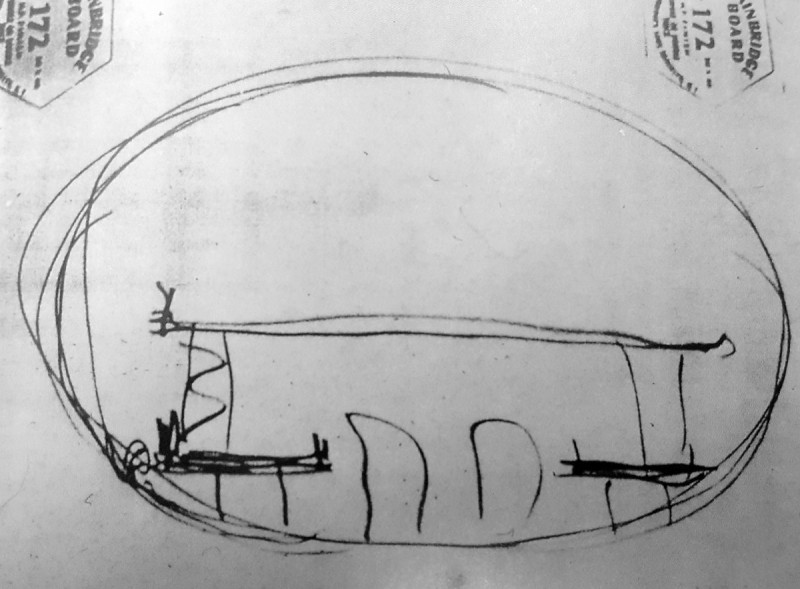
With this sketch, Weese ultimately knew what the CFA wanted: something that was similar to his own sketch from a year earlier. After the meeting where Bunshaft created his sketch, the Metro would be seen as a hybrid design — not just a Weese plan, but a Weese-CFA plan. Bunshaft’s final move was to meet Weese at his starting point.
A month later, Weese finally got what he wanted — approval from the CFA. In the CFA transcript of this meeting, all words were positive.
“It’s beautiful,” said Saarinen.
“We think this is a magnificent new approach,” said Walton, “and it is what we have been talking about all the time. We are delighted with it.”
Even Bunshaft was confident in Weese’s final proposal, saying, “I think this is perhaps the most beautiful thing we have had before us in a long time here, and the public taste does not have to have bad design to be happy … I think [the public] will like it very much.”
Despite this happy ending, in the long run the CFA did not get exactly what it wanted. While the CFA hoped for every Metro station to be identical, that is not the case today. There are many variables, such as how many of the stations are above ground where canopies, rather than vaults or boxes, are utilized.
Image courtesy of the US Commission of Fine Arts 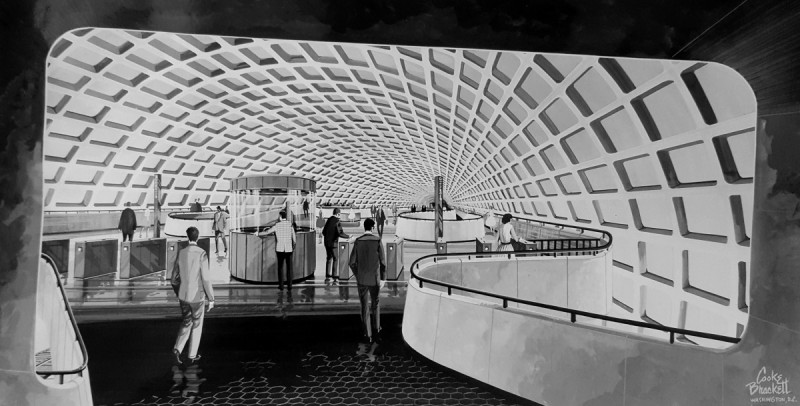
The feedback
Once the Metro was fully constructed and open to the public, reactions were largely positive — and also sometimes inaccurate. The Washington Post claimed that the CFA’s role in the design process was that of an ally and that the real battle was against the engineers. Additionally, Architectural Record wrote that Weese sought the final design all along, and that he “knew what he wanted.”
Regardless, since its opening, the Brutalist design of the Metro has proven to be timeless. In January 2014, the American Institute of Architects awarded the Metrorail system the 25 Year Award for architecture, praising it as an exemplar of good design. Residents, commuters, and visitors alike can agree that the Metro, despite its troubles, is anything but an eyesore.
